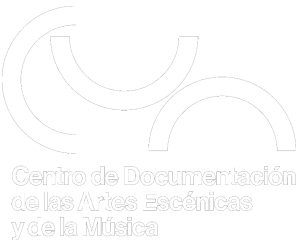Wagner, Klimt, and the Metaphysics of Creativity in fin-de-siècle Vienna KARNES, Kevin C.
Detalles de publicación: [Richmond (Va) American Musicological Society], 2009Resumen: RESUMEN: This article takes a close look at a pair of well-known works by Gustav Klimt, the Nuda Veritas (1898) and the Beethoven Frieze (1902), and argues that the Schopenhauerian worldview evident in them testifies to the underappreciated influence of Richard Wagner on the Viennese artistic scene circa 1900. I begin by isolating previously unnoticed strains of Schopenhauerian iconography evident in the Nuda Veritas pertaining to the source and value of artistic creativity. I proceed by demonstrating that Klimt's peculiar use of that iconography conflicts with Schopenhauer's own theories of art, although it hews closely to Wagner's idiosyncratic interpretation of Schopenhauer's ideas outlined in his Beethoven essay and enacted in Die Meistersinger von Nürnberg. After surveying evidence of Klimt's familiarity with Wagner's works, I turn to Die Meister singer, highlighting the unacknowledged ways in which that opera dramatically enacts Wagner's theories of creativity. I conclude by suggesting that some of those same theories underlie the imagery of Klimt's Beethoven Frieze, and by suggesting more broadly that the Beethoven Frieze and the Nuda Veritas testify to the vital role played by Wagner's music dramas in mediating and popularizing a quasi-Schopenhauerian worldview in the creative culture of the turn of the century.RESUMEN: This article takes a close look at a pair of well-known works by Gustav Klimt, the Nuda Veritas (1898) and the Beethoven Frieze (1902), and argues that the Schopenhauerian worldview evident in them testifies to the underappreciated influence of Richard Wagner on the Viennese artistic scene circa 1900. I begin by isolating previously unnoticed strains of Schopenhauerian iconography evident in the Nuda Veritas pertaining to the source and value of artistic creativity. I proceed by demonstrating that Klimt's peculiar use of that iconography conflicts with Schopenhauer's own theories of art, although it hews closely to Wagner's idiosyncratic interpretation of Schopenhauer's ideas outlined in his Beethoven essay and enacted in Die Meistersinger von Nürnberg. After surveying evidence of Klimt's familiarity with Wagner's works, I turn to Die Meister singer, highlighting the unacknowledged ways in which that opera dramatically enacts Wagner's theories of creativity. I conclude by suggesting that some of those same theories underlie the imagery of Klimt's Beethoven Frieze, and by suggesting more broadly that the Beethoven Frieze and the Nuda Veritas testify to the vital role played by Wagner's music dramas in mediating and popularizing a quasi-Schopenhauerian worldview in the creative culture of the turn of the century.


